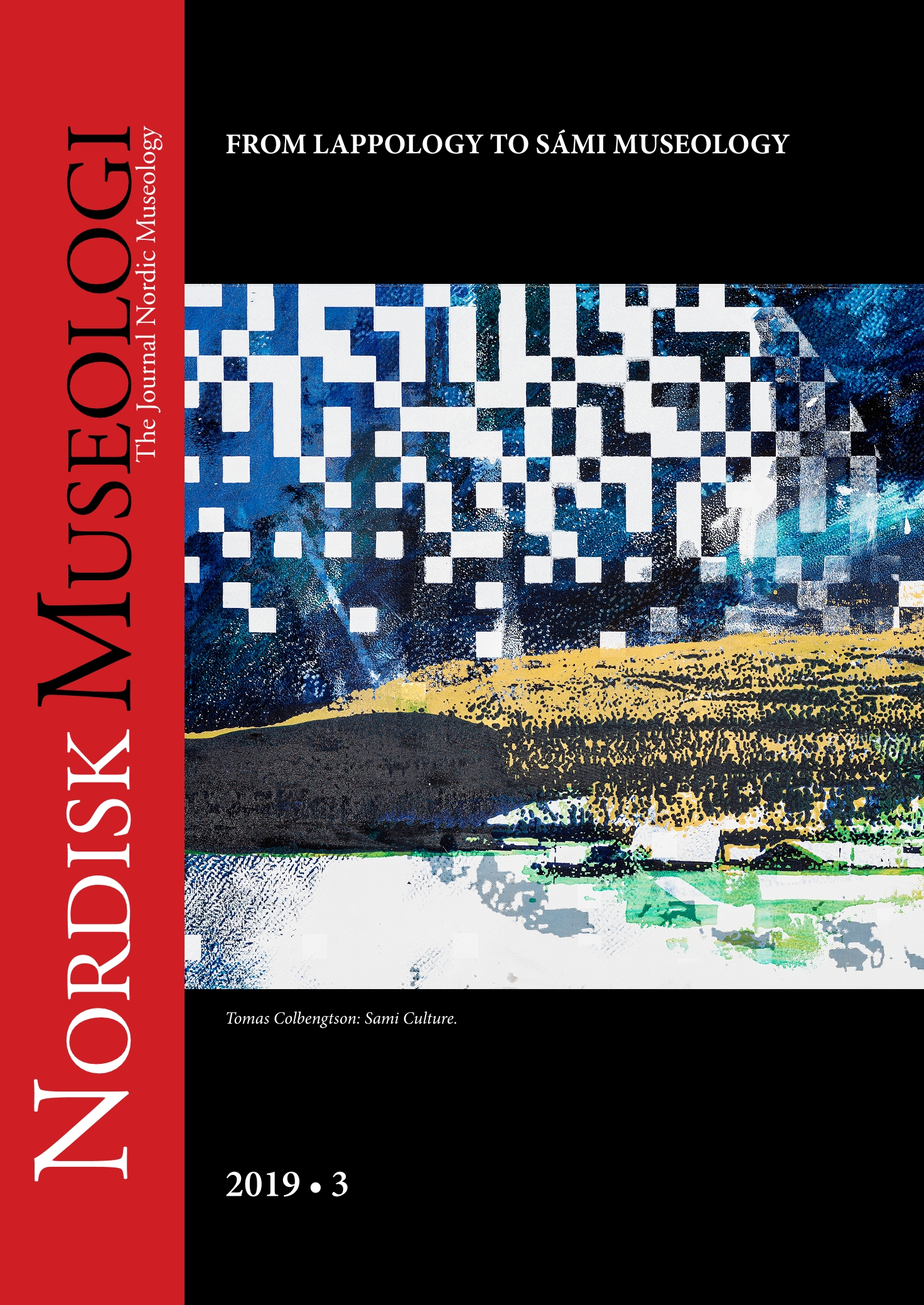Religion of the past or living heritage?
Dissemination of knowledge on Sámi religion in museums in Northern Finland
DOI:
https://doi.org/10.5617/nm.7739Abstract
In recent years we have witnessed a growing contemporary use of Sámi offering places by various actors, for example tourists, the local population and contemporary pagans. Hence, sites that the heritage authorities and researchers have seen as belonging to the past have gained new relevance. Nevertheless, Sámi religion is often presented in museums in relation to history and prehistory. Sámi culture has been presented in museums and exhibitions since the nineteenth century. In pointing out that this long history of museum displays affects how Sámi culture is presented in contemporary museums, Nika Potinkara (2015:41) suggests that we can renew, comment on or question the old presentations. This article explores the representations of Sámi religion in four museums and exhibitions in Northern Finland, and will answer the following research question: How is Sámi religion presented and what kind of themes are present? Here museums are studied as arenas for the dissemination of results of knowledge production. What kind of image of Sámi religion do they share?
Downloads
Published
Issue
Section
License
Contents published in editions of The Journal Nordic Museology in volumes predating 2017 are protected by the Norwegian Law of Copyright. This means that text and images published in these volumes can only be shared and republished with written permission from the author and/or photographer. Starting from 2017, the content published in The Journal Nordic Museology is - unless otherwise stated - licensed through Creative Commons Licence CC BY-NC-ND.4.0. This means that content can be copied, distributed and disseminated in any medium or format under the following terms:
- Attribution — You must give appropriate credit, provide a link to the license, and indicate if changes were made. You may do so in any reasonable manner, but not in any way that suggests the licensor endorses you or your use.
- Non-Commercial — You may not use the material for commercial purposes.
- No Derivatives — If you remix, transform, or build upon the material, you may not distribute the modified material.
- No additional restrictions — You may not apply legal terms or technological measures that legally restrict others from doing anything the license permits.
Notices:
- You do not have to comply with the license for elements of the material in the public domain or where your use is permitted by an applicable exception or limitation.
- No warranties are given. The license may not give you all of the permissions necessary for your intended use. For example, other rights such as publicity, privacy, or moral rights may limit how you use the material. Authors who publish in Nordic museology accept the following conditions:
Authors(s) retains copyright to the article and give Nordic Museology right to first publication while the article is licensed under the Creative Commons Lens CC BY-NC-ND 4.0 This license allows sharing the article for non-commercial purposes, as long as the author and first publishing place (The Journal Nordic Museology) is credited. The license does not allow others to publish processed versions of the article without the author's permission.
The author is free to publish and distribute the work/article after publication in Nordisk Museologi, while referring to the journal as the first place of publication. Submissions that are under consideration for publication or accepted for publication in Nordisk Museology cannot simultaneously be under consideration for publication in other journals, anthologies, monographs or the like. By submitting contributions, the author accepts that the contribution is published in both digital and printed editions of Nordisk Museology. For more about publication, see the Author Guidelines.



